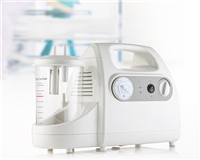A Question of Direction: Examining BLDC Motor reversibility
A common question we encounter at Power Motor concerns the fundamental flexibility of our technology: are brushless DC motors reversible? The short answer is a definitive yes. This capability is not an added feature but a core function of their design. As a specialized BLDC motor manufacturer, we engineer this reversibility directly into the motor's control system, opening a wider range of applications of brushless DC motors that require precise bidirectional movement.

The Mechanism Behind the Reverse
Understanding how a BLDC motor changes direction requires a look at its driving principle. The rotation is created by the sequential energizing of stator windings, which generate a rotating magnetic field. This field pulls the permanent magnet rotor along with it. To reverse the motor's direction, the sequence of this electrical pulse is simply inverted. Imagine the controller sending power to the windings in a clockwise order (A, B, C); for reverse operation, it switches to a counter-clockwise sequence (A, C, B). This immediate shift in the magnetic field's rotation is what causes the rotor to spin the opposite way. It is a purely electronic maneuver, executed without any mechanical alterations.
The Crucial Function of the Electronic Regulator
This reversal function is entirely dependent on the sophistication of the motor's electronic controller. The controller acts as the brain, housing the logic and power circuits necessary to execute the precise switching sequence for either direction. For our team as a BLDC motor manufacturer, designing a robust controller is as important as designing the motor itself. This component receives commands from a user or a main system and translates them into the specific firing pattern for the transistors that power the windings. The speed and smoothness of the direction change are direct reflections of the controller's quality and programming.
Practical Uses for Bidirectional Operation
The real-world applications of brushless DC motors that leverage reversibility are extensive and critical to modern automation. In robotic arms, reversible motors allow for both the extension and retraction of joints, enabling complex picking and placing tasks. In conveyor systems, they can facilitate forward and reverse movement for precise positioning of items. Automated valve controls use this feature to open and close flow pathways, and in certain medical devices, reversible motion is key for functions like adjustment and retrieval. This bidirectional capability provides designers with a greater degree of mechanical freedom.
The inherent reversibility of brushless DC motors is a powerful aspect of their design, made possible by advanced electronic control. This functionality expands their utility far beyond what is possible with single-direction motors. For engineers and designers, it means greater flexibility in creating dynamic mechanical systems. At Power Motor, our focus as a BLDC motor manufacturer is to ensure that the motors we provide offer not just this capability, but also the reliability and precision required for demanding applications of brushless DC motors across various industries.
